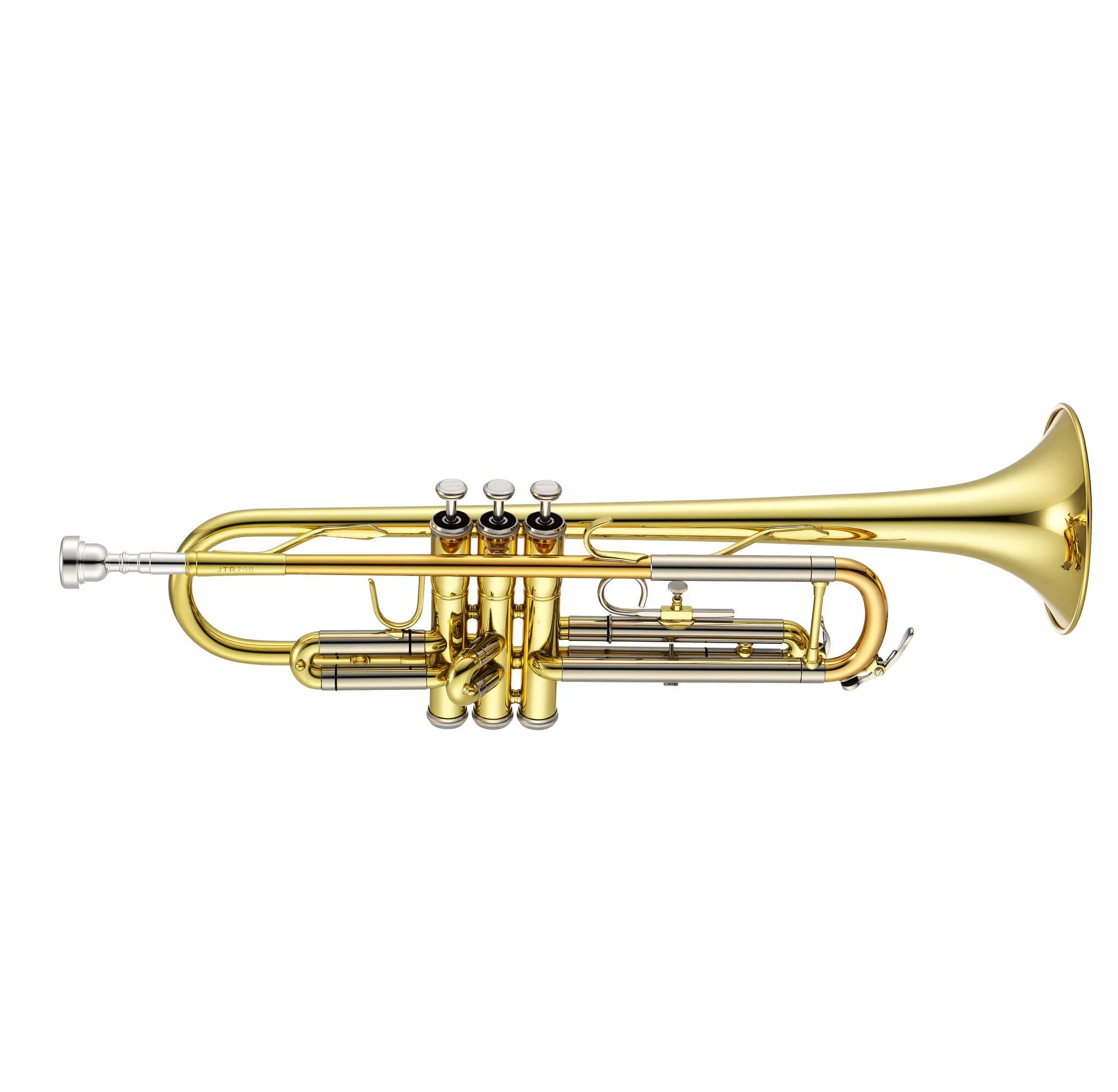Brass.
Brass instruments are made of long pieces of brass, twisted and curled into different shapes. The length and width of the pipe determines how high or low the instrument will sound.
Like the woodwind family, brass instruments create sound using air. However, brass instruments do not use reeds. Instead, players buzz their lips into a mouthpiece. The vibrations in the mouthpiece create sound.
The Brass family is louder than any other family of instruments in the Orchestra.

Instruments.
The brass instruments that you will find in the Orchestra are Trumpets, French Horns, Trombones and Tubas.
Trumpets.
The Trumpet is the smallest member of the Brass family. This means it is also the highest sounding instrument. There are between 2 and 4 trumpets in every Orchestra. Trumpets are loud and proud, and often play triumphant melodies in Orchestral Music.
Trombones.
The Trombone is a much lower sounding instrument. The Trombone plays in the same pitch range as the bassoon and cello. Instead of a valve, the Trombone uses a slide to change pitch.
French Horn.
The French Horn is an interesting instrument, made up of 18 feet of twisted tubing. It has a versatile sound and large dynamic range.
There are 8 French Horns in an Orchestra.
Tuba.
The Tuba is the largest and lowest of the Brass Instruments. It joins the Double Bass to provide the foundations of the Orchestra. The Tuba is a huge instrument, and requires a lot of air to create a sound. Only one Tuba will be found in the Orchestra.
Listen.
Check out audio examples of each instrument below.
All together now
Brass instruments often play in groups on their own, outside of the Orchestra.
If there are four players, it is called a Quartet. If there are five players, it is called a Quintet.
Listen to these examples and close your eyes.
Can you pick out which brass instrument is playing?
Remember to listen to their pitch to help you decide.




